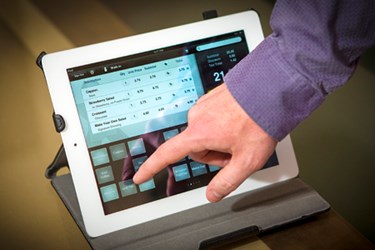Grocery and Convenience Store IT News For VARs — November 1, 2013

By Anna Rose Welch, Editorial & Community Director, Advancing RNA

This week’s news includes growth among independent grocers, convenience stores considering pre-paid credit cards, and “smart shelves” developed for supermarkets.
Independent Grocery Sector Reports Growth
In August, The National Grocers Association (NGA) released the results of the Independent Grocers 2012 Financial Survey, which showed the independent sector is increasing in strength. The sector secured a net profit of 1.65 percent in 2012 (before taxes), up from 1.12 percent in 2011. Same-store sales also saw growth in 2012, reported up 1.46 percent before being adjusted for inflation. Only 1.9 percent of companies reported negative profit numbers compared to 2011 when 13.5 percent reported negative profits. Decreases in unemployment, increases in consumer confidence, and improvements in other economic indicators are cited as reasons for this sector’s growth.
C-Stores Explore Financial Services
Lydia DePillis for The Washington Post discusses the possibilities that exist for convenience stores if they begin offering a form of payment to customers. Following Walgreen’s decision to offer pre-paid debit cards enabling customers to manage finances without a bank, DePillis says, “It is possible that retailers could become full-fledged banks.” She also says that should a retailer provide a form of payment that has built in rewards, it will create strong customer loyalty toward its products. She cites retailers like U.K. grocery chains Sainsbury’s and Marks & Spencer, which have partnered with financial institutions to give consumers everything they might need in one location. Similarly, other experts claim that retailer-based products are serving the unbanked much better than that of large financial institutions. Adam Rust of Reinvestment Partners says the large number of already existent c-stores makes c-stores the proper outlet to offer widespread financial services.
“Smart Shelves” Personalize Shopping
RT discusses the development of grocery store “smart shelves” which can gather intelligence on customers in order to personalize each individual shopper’s experiences. The devices, installed in a grocer’s shelves, will use sensors to determine when goods are picked up or when someone is pondering a purchase. The data can then be used to make personalized offers or encourage certain purchases for individual customers. While the data does not identify customers or glean any personally identifiable information about customers, this development could enable retailers to more fully understand customers’ in-store behaviors.
Small Stores Are Better Testing Ground For Innovation
David Orgel for Supermarket News argues that suppliers must begin turning their attention towards smaller retailers rather than larger retail stores. According to Orgel, smaller retails are the best location to try new innovative strategies because of these stores’ outsized impact and close relationships with communities. Considering that the independent sector is responsible for contributing $130 billion in annual sales, independent stores are an important place for suppliers to turn their attention.
Supermarkets Still “Catching Up” On Digital
Supermarket News writer David Orgel discusses the results of Kantar Retail’s first-ever Digital Power Study, which planned to rank companies on their digital prowess. However, because multi-channel and digital are still works-in-progress, there were no clear results about which company was doing the best in these areas. The study did separate players into various classes: those who are participating, progressing, and performing. Orgel says the inability to rank companies proves most companies are still playing catch-up with shoppers who have gone digital. His article also includes a link to a previous Supermarket News article highlighting some findings from the study. For example, the article reports how one retailer respondent says there is a lot of room for manufacturers to build brands via digital. According to this particular source, most manufacturers are relying on digital simply for advertising. The full Kantar Retail study can be downloaded here.
Grocery and Convenience Store IT Talking Points
National Hog Farmer Magazine highlights some of the reasons the pork industry has relied upon government data to this point. Efficient marketing, a leveled playing field, and the governments’ immunity to antitrust laws are some of the reasons the industry has remained reliant upon the government. However, following the recent government shut down which slowed or eliminated data altogether, writer Steve Meyer poses some important questions for the industry to consider. For instance, he asks, “Will we conclude that there is no way to generate our own data and information in a manner that does not violate antitrust laws?”
The NACS highlights some of the key points of advice for c-store operators looking to start in the foodservice industry. According to experts, operators must not run the foodservice component in the mindset of a retailer, but should think like a chef instead. Similarly, they say difficulties will lie in production, storage and merchandizing space requirements, the costs of purchasing new equipment and restructuring systems/processes.
Elaine Watson for Food Navigator-USA discusses analyst insights gleaned from Wells Fargo’s first c-store forum. Wells Fargo analyst Bonnie Herzog claims that c-stores have become “increasingly important as an incubator for new products; successful consumer response here will likely translate into broader roll-outs of new products across the Food/Drug/Mass channel.” The article also highlights some of the brands and products that are showing growth in the c-store channel.
